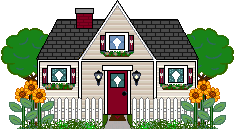Healthy lawn
WATERING THE SEASONS
It is not necessary to water your lawn in the spring. A lawn cut to 7 cm in mid-spring does not need to be watered until the end of June. Contrariwise, a short lawn requires more watering. It is not advisable to water your lawn in the fall, unless the rains slow in coming, because the grass has to be green and healthy to withstand the rigors of winter.
QUANTITIES AND FREQUENCY WATERING
The lawn should not be watered every day, because they only need an average of 1 inch of water per week. Watering every three to five days is sufficient. In addition, watering should be as slow as possible. Too quick, frequent watering produce short roots, while a proper watering will encourage deep root growth. These deep roots draw moisture from a larger volume of soil, reducing the need to water your lawn and increasing its resistance to drought. It is better to avoid short watering 15 minutes merely wet the surface, because they create shallow roots. Long watering is preferable to soak the soil well. It is advisable to water by hand directly on the ground level plants that require more water as those in the fields near trees
HOW TO AVOID HAVING A YELLOW LAWN
The way you prepare and maintain your lawn in the spring and fall determine tolerance to drought . To reduce the need for watering, the lawn maintenance plan should maximize the volume and depth of the roots in preparation for a possible heat wave period. Here are some useful information that will help you get there and that will increase the chances of survival of your lawn during drought:
• Avoid watering your lawn in the early spring. Let your grass greening naturally, then mow regularly;
• In the spring, let the soil dry out slightly and let the grass wither somewhat before watering to encourage the development of deep and strong roots. Such a root system will reduce the need for irrigation in summer and help the lawn survive in hot weather or when additional watering restrictions apply.
A light soil (sandy) Need more watering than a heavy soil (clay), it is advisable to water twice more and to Avoid walking on wet grass. Shady areas need less water, contrariwise, near trees, you should water twice. You can determine the duration of watering necessary to provide the required 1 inch of water to your lawn by placing an empty container (such as a tin can) under your watering and check how long it takes to fill the desired level.
LAWN AERATION 

Lawn aeration is essential to allow air, water and fertilizer to penetrate the ground and to move to the roots. It also encourages the development of deep roots, microbial action and reduce weeds. Aerating the lawn is done using mechanical aerators, Tools strong teeth that pierce the ground and extract cores of soil.
MOWING THE LAWN

Mowing is essential for a healthy lawn. In fact, a properly mowed lawn (good height, good frequency) reduce the risk of contamination by weeds and some insects and will be much greener and much less sensitive to drought and winter cold. Here are the rules to follow when mowing your lawn:
• Never cut more than one third of the grass height. If the grass is too high, cutting in two stages over a period of one week.
• Allow on-site grass clippings. This is a good fertilizer, and normally it does not result excessive thatch buildup if you mow regularly.
Clippings can contain up to 2 pounds of nitrogen per 1076 square feet. The mineralization of this organic matter is rapid. In addition, it helps to reduce the volume of municipal waste and thus the costs associated with disposal.
• Sharpen your mower blades every year. Sharp cutting edges will get a beautiful lawn mowing and reduce the chances of developing diseases
• Mow at a height of at least 2 ½ inches in wet periods (spring and early summer ) and 3 inches in drought periods ( July and August). Only the first section of the spring and the last mowing of the fall should be shorter. Mowing to 2 inches in the early season stimulates the growth of grasses, late in the season, it prevents the development of diseases. During active growth, mowing should be done every week. By cons, during the summer months, mowing every two weeks is generally sufficient.
The length of the grass directly influences the development of their roots. The long grass ( 6 to 7.5 cm) have deeper roots that reduce the sensitivity of your lawn with drought, while the short ones makes mowing the lawn more susceptible to disease and insects, and requires more maintenance and water.
WIGHT GRUBS 

If your lawn is hard sclerosis when you pull on the affected areas, it is a victim of white grubs. These are large worms (between 2 and 4 cm in length depending on the species) that live in the soil , where they feed on grass roots. They are usually active during the months of May, June and September. If you see birds pecking your lawn, the presence of skunk scratches or marmots burrow into your lawn, check the presence of white grubs in your lawn.



